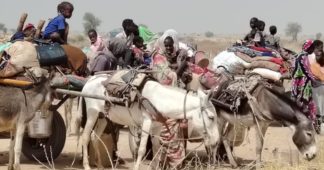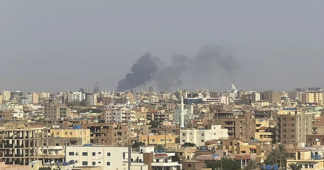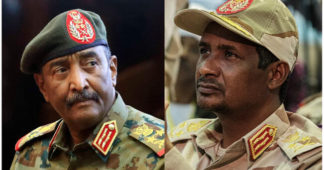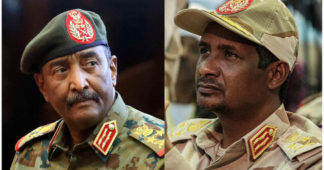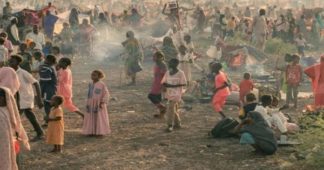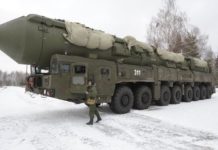by Pavan Kulkarni
Aug 05, 2025
Once a haven for the displaced, North Darfur’s Tawila is now ground zero for a deadly cholera outbreak
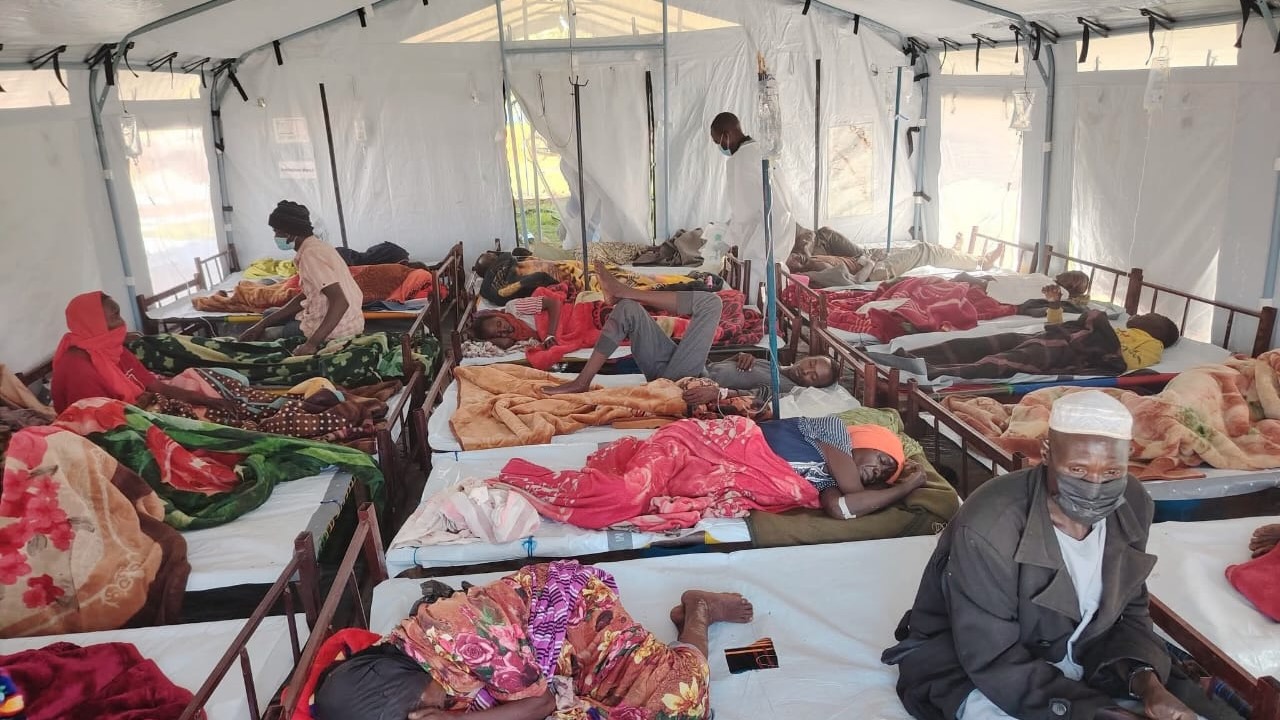
Cholera patients in a makeshift isolation center in Tawila. 2,000-4,000 cases of cholera have been reported in Darfur.
Cholera stalks hundreds of thousands taking refuge in the Internally Displaced People (IDP) camps in the Tawila area of war-torn Sudan’s North Darfur state.
Fleeing from its besieged capital, El Fasher, and the famine-stricken IDP camps on its outskirts, they had survived a perilous 70 km journey, often on foot, to reach the relative safety of Tawila, which is now in the grip of a cholera outbreak since July 21.
By Monday, August 4, the cumulative daily cases here exceeded 3,150, including 65 deaths, said Adam Rojal, spokesperson of the General Coordination of Darfur Displaced People and Refugees. Most cases are concentrated in the Daba Nira and Omdat Tawila.
The two neighboring IDP camps are among the five set up amid the world’s worst displacement crisis caused by the war between the Sudanese Armed Forces (SAF) and the paramilitary Rapid Support Forces (RSF).
From one war to another
Former allies, they were ruling together in a military junta that was violently suppressing a mass pro-democracy movement until April 15, 2023, when their internally brewing power struggle erupted into a war.
Caught in the crossfire on the very first day of the war, most of Tawila’s residents had fled, Rojal recalls. Among them were the over 200,000 IDPs from the earlier Darfur Civil War in the 2000s, when the SAF had spawned the Janjaweed militias to commit atrocities, including massacres, mass rapes, burning of villages, etc. These militias were later coalesced into the RSF in 2013.
Ten years later, soon after this war started, the RSF troops stormed across Darfur, routing the SAF from four of the five states in the region. North Darfur was the only state where the SAF had retained a foothold by year-end, limited mostly to its capital, El Fasher, and the surrounding areas.
By August that year, the SAF retreated from Tawila, about 60 km west of El Fasher, abandoning it to the RSF, which had already initiated an ethnic cleansing campaign in West Darfur against the communities that had supported the rebel groups in the 2000s.
Streaming down from the Jebel Merra mountains that straddle across the borders of North Darfur, Central Darfur, and West Darfur, a faction of the Sudan Liberation Movement (SLM), led by Abdel Wahid al-Nur, “secured the area” by September.
It is “thanks to” them that the “all IDPs” from the previous war “returned”, along with the “host communities” and many more “displaced from the various parts of Sudan during the April 15 War,” Rojal told Peoples Dispatch.
“One of the most significant actions taken by the Movement was the repatriation of those displaced by the conflict to Tawila,” said its spokesperson, Mujib al-Zubair, announcing its control of the area. “We have also taken measures to secure the region and have appealed to the United Nations and its agencies to supply vital lifesaving relief, as well as educational resources, given the significant number of school-age children.”
Surviving on animal feed
The supplies, however, did not prove sufficient as Tawila’s IDP population swelled after the RSF laid a siege on El Fasher last May. Lacking food with the supply routes cut off under siege, Zamzam, Sudan’s largest IDP camp from the Darfur civil war, located on the city’s outskirts, became the first to be struck with famine, which eventually spread to other areas. El Fasher itself is at risk of famine.
Caught between the artillery fire by the RSF and SAF’s airstrikes to stop its advances, they fled in hundreds of thousands toward the Jebel Merra mountains. Tawila is the first place where they can halt en route.
The 70 km between El Fasher and Tawila is “lawless”, with neither the broken state nor any of the rebel groups exercising authority, said Salih Osman, the president of the Darfur Bar Association.
Risking attacks by bandits, hungry and sick children and elderly people, who had not been able to escape earlier, make this desperate journey on foot, with no supply of water and food on the way.
Tawila’s IDP population – already 230,000 from the Darfur Civil War, well before this war between SAF and the RSF erupted – is now “reaching a million,” said Rojal.
“It is not only El Fasher; people fleeing to Jebel Merra from across North Darfur, South Darfur’s capital Nyala, and the Kordofan region, all halt in Tawila,” Osman told Peoples Dispatch, explaining the strain this has caused on the limited humanitarian supplies available.
With supplies dwindling, rice has become unaffordable, added Rojal. A one-kilo bag, costing a thousand Sudanese pounds before the war, “now sells at 5,000.” People survived by eating a type of cattle feed called kora ambaz. But a kilo of this, costing two pounds before the war, has now risen to 750 pounds, he said, explaining that even animal feed is getting out of the reach of displaced people.
Cholera pursues the malnourished
The monsoon, much-awaited in this semi-arid region on the Sahelian belt, brought cholera to the hungry residents lacking sanitation. The only sources of running water, flowing down the valleys, are contaminated, Rojal said.
The deadly disease is fast spreading south, also infecting various IDP camps in the South Darfur state. Jebel Merra region, whose mountainous sanctuary the IDPs fleeing the war finally hope to reach, has 312 detected cases as of August 3.
Across the five states of the Darfur region, the cumulative daily cases are nearing 4000, including over 197 deaths, according to the General Coordination of Darfur Displaced People and Refugees.
The UN Children’s Fund (UNICEF) verified a smaller figure of 2,140 cases across Darfur, with at least 80 fatalities.
“Despite being preventable and easily treatable, cholera is ripping through Tawila and elsewhere in Darfur, threatening children’s lives, especially the youngest and most vulnerable,” said Sheldon Yett, UNICEF Representative for Sudan.
Worst affected are the children in North Darfur, where severe acute malnutrition has doubled over the past year. They face “a lethal combination: children whose bodies are weakened by hunger are far more likely to contract cholera and to die from it,” reads UNICEF’s statement on August 3.
“[I]n addition to cholera, the lives of more than 640,000 children under five are at heightened risk of violence, disease, and hunger” in North Darfur, where the fighting has further intensified since this April.
We remind our readers that publication of articles on our site does not mean that we agree with what is written. Our policy is to publish anything which we consider of interest, so as to assist our readers in forming their opinions. Sometimes we even publish articles with which we totally disagree, since we believe it is important for our readers to be informed on as wide a spectrum of views as possible.
